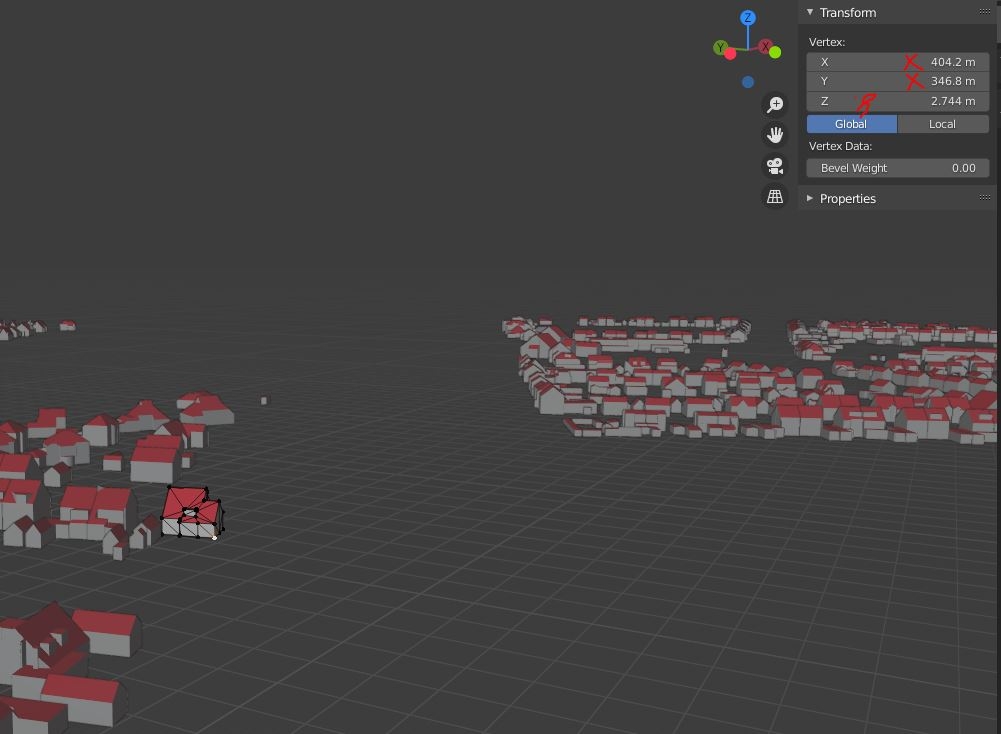M
by magicalcloud_75 on 1 Apr 2021
#
I think this piece of information is not used during the BlenderGIS import. Is there a way to inpect global XY in Blender?
“geographicalExtent”:[105475.09499707031,443446.56600183103,-.5869998931884766,106282.84600415039,443896.6808242187,18.35120964050293]
Dutch RD/ NAP values.
“transform”:{“scale”:[0.001,0.001,0.001],“translate”:[105475.0..,443446.5..,-2.586..]}}
J
by Jesusbill on 1 Apr 2021
#
Click tab for Edit Mode, n to open the right side-panel and when clicking on an object (vertex/edge/face) under the Item tab you can see the Local and Global coordinates. Is this what you were looking for?
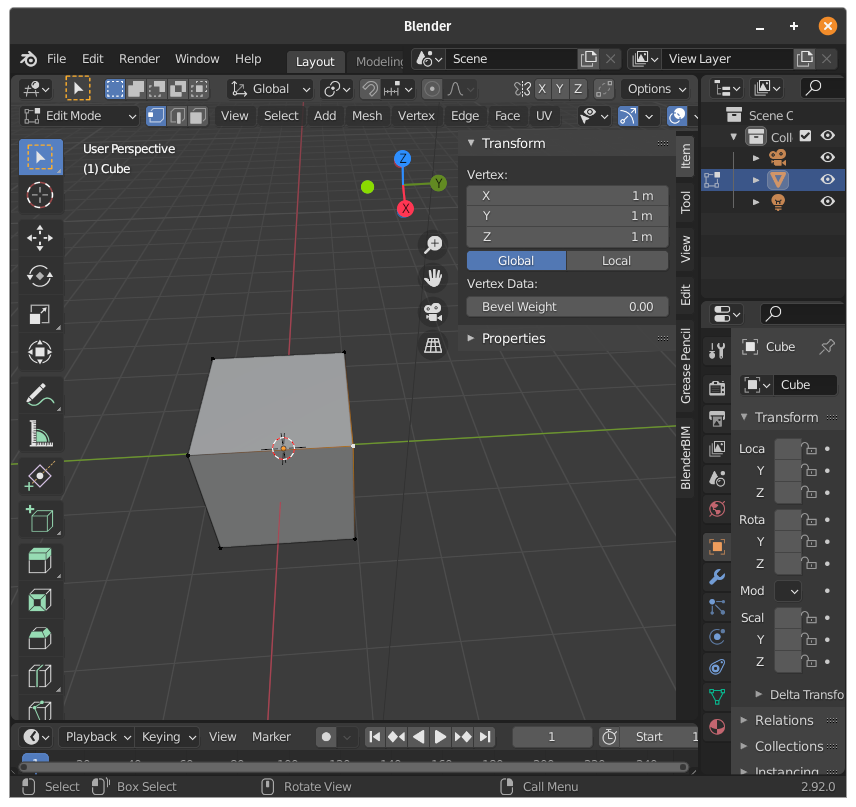
M
by magicalcloud_75 on 1 Apr 2021
#
How can i translate the 0,0,0 pint so the whole cityjson model is XYZ geopositioned correct. I select all. Fill in XYZ, and what now? Where is the 'GO' or 'RUN' button?? Sorry for the noob skills.
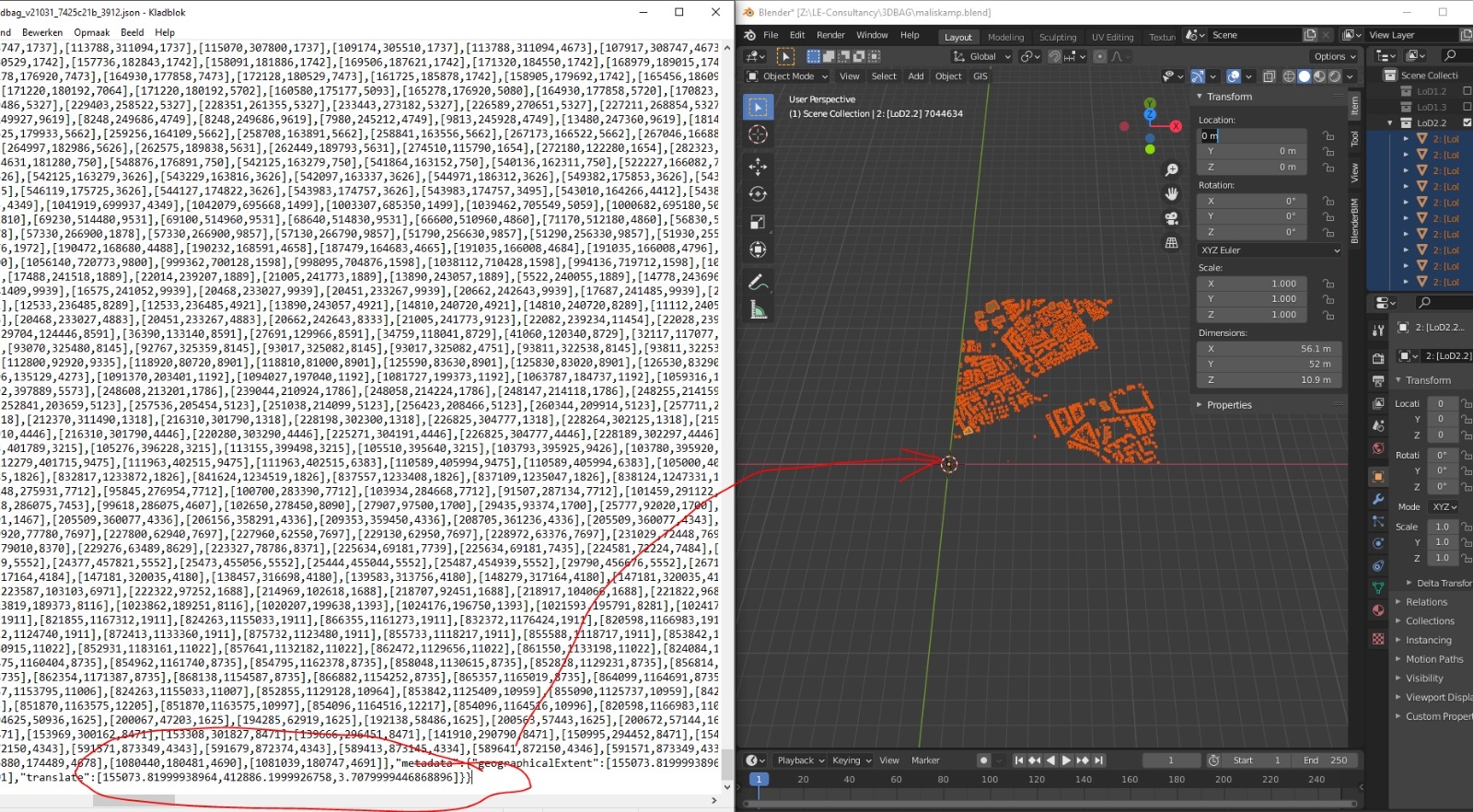
J
by Jesusbill on 1 Apr 2021
#
+1 votes
There is no button, the transformation is applied on the fly. But changing that number only affects the active object, which is the yellow one, and not all the objects.
Try this, a to select all, g to grab and enable moving all, then x to lock x direction and type in the coordinate. Repeat for y and z directions. But, keep in mind that as you enter very big numbers (1) you may have flickering and in general a weird visualization due to number truncation, and (2) you will probably have to increase the end parameter of the view so that it does not cut off object very far from your view. This can be done from the View tab

I am also a newbie so there may be better ways to do it
M
by magicalcloud_75 on 7 Apr 2021
#
+1 votes
New released cityjson files are smaller and are much more friendly to import.
(The following is in dutch..)
"
_Wat zijn de belangrijkste vernieuwingen?
– Alle producten zijn geactualiseerd op basis van de luchtfoto’s van 2019 en data uit de BAG en BGT van 1 januari 2020.
– De downloadtegels van 5km x 6km zijn opgeknipt in vier delen. De kleinere bestandsgrootte versnelt het verwerken en downloaden;
– Jaartallen en productnamen zijn toegevoegd aan de bestandsnamen in verband met het selecteren van meerdere producten en jaargangen;
– Coördinaten zijn afgerond op maximaal vier decimalen achter de komma om de bestandsgrootte te beperken;
– CityJSON bevat uitgebreidere metadata;
– In het bestand 3D Hoogtestatistieken Gebouwen zijn de kwaliteitsparameters gevuld.
"_
Meer info. For anybody else intrested :P
https://3d.kadaster.nl/basisvoorziening-3d/
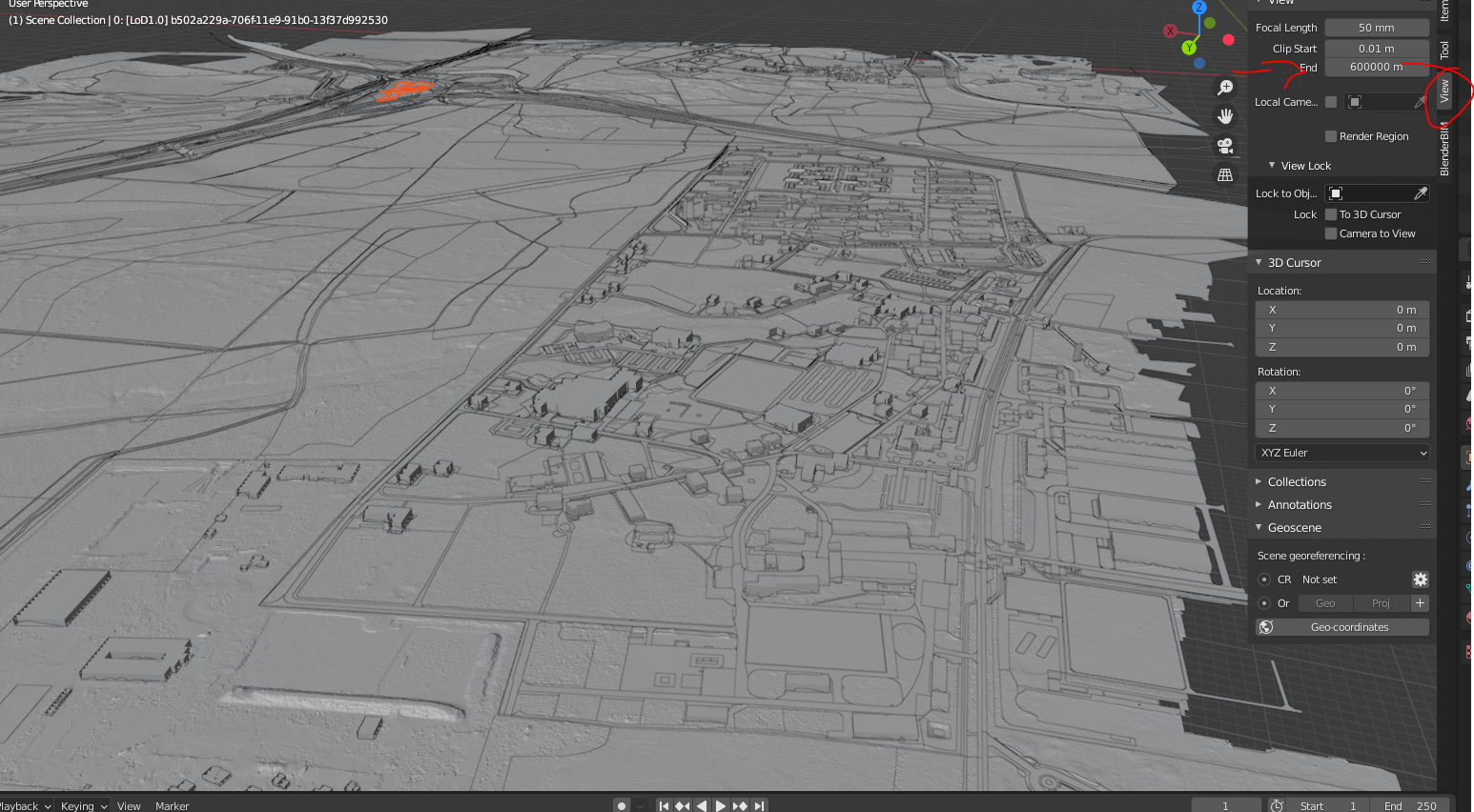
M
by magicalcloud_75 on 8 Apr 2021
#
3D BAG to DXF to IFC gives better building geometry. Blenderbim does not seem to export cityjson to .ifc Why? Settings?
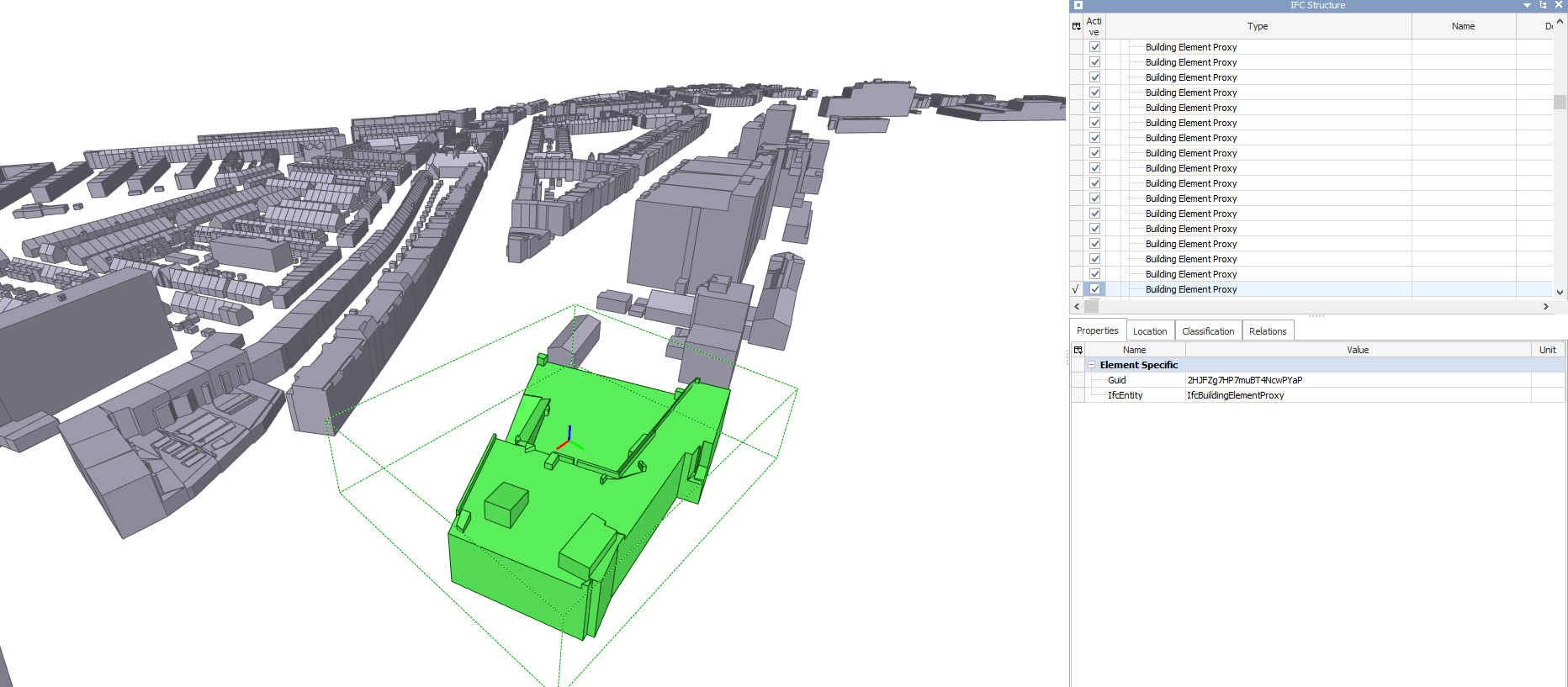
M
by Moult on 9 Apr 2021
#
Not sure what you mean - if it's geometry, it can be captured in IFC, even without metadata.
M
by magicalcloud_75 on 9 Apr 2021, edited 9 Apr 2021
#
I was unable to export ifc from imported cityjson. I did manage to work it out using citygml. That works quite well for 3DBAG. For the groundsurface i doubt if this will be efficient to do it the ifc wsy. Does everthing needs to be ifc..?
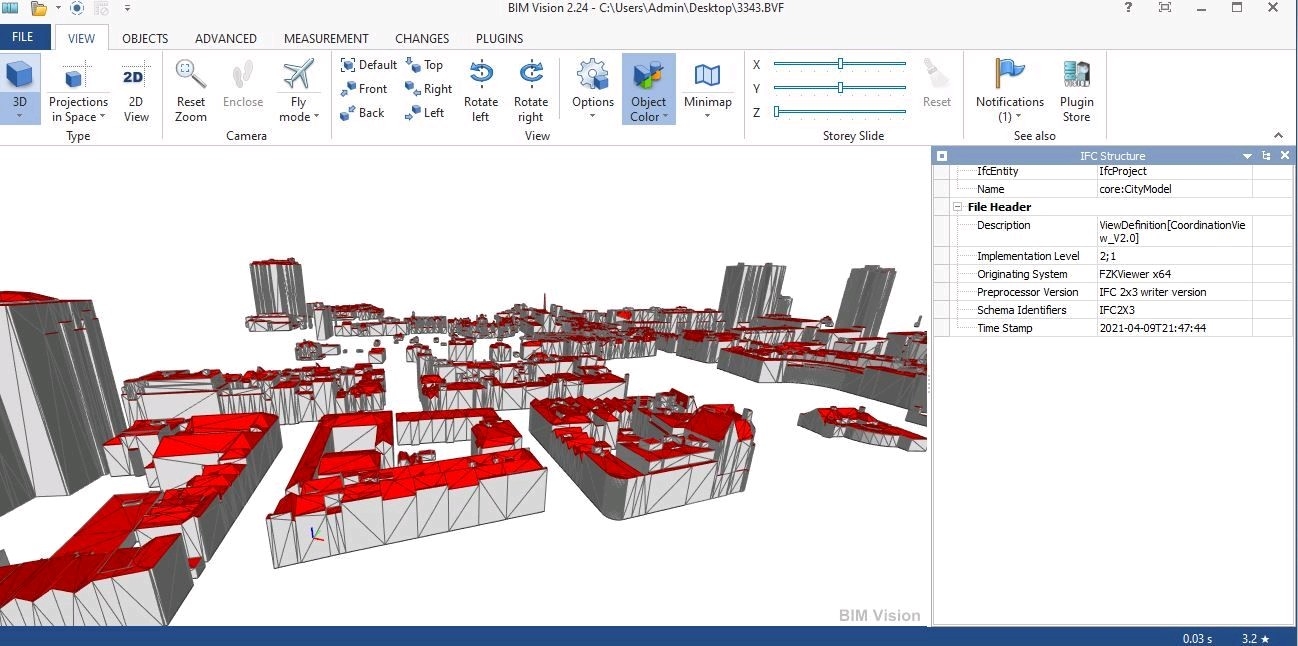
M
by Moult on 9 Apr 2021
#
There is no benefit to storing raw geometry in IFC if that is the only thing that is stored. The value of IFC comes in its BIM metadata.
M
by magicalcloud_75 on 10 Apr 2021, edited 10 Apr 2021
#
Geometry has value. Nevermind the format. I personally. m much more interested in getting geometry over from gis to 3d cad then 'bimdata', if the carrier is ifc, well fine..
M
by magicalcloud_75 on 10 Apr 2021
#
What suggestions to store these Dutch 'LoD2.2' models? In what format to work with ? I mean, to connect to the worlds, the one of BuildingSmart to OCG? I see cityjson and ifc.
J
by Jesusbill on 10 Apr 2021, edited 10 Apr 2021
#
What suggestions to store these Dutch 'LoD2.2' models? In what format to work with ?
For pure geometry and faces I can think of stl, obj, dae, step, iges, brep
IFC compliant software will always look for the BIM data attached to geometry so I guess there is no point and utility in storing only geometry in IFC
M
by magicalcloud_75 on 11 Apr 2021, edited 11 Apr 2021
#
+1 votes
This data is provided as .obj but it very difficult to get this into normal CAD/BIM software. I'm talking Autodesk Revit or Autodesk (alternatives). Forgive me the Autodesk background..
But besides cityjson the .obj format needs an extra conversions because of lack of compatibility between gis and cad/bim.
Maybe we have agree to disagree :) but i would say 3d buildings coming from GIS national assetmanagent could be, should be ifc compatible for use. Skip the converting..
J
by Jesusbill on 11 Apr 2021
#
For CAD alternatives I would look into iges which you can use FreeCAD I believe to do so
L
by LaurensJN on 12 Apr 2021
#
+3 votes
It is actually also not true that there is no metadata. The metadata is just decoupled from the geometry, because there are different LoDs. For example, there is information about roof type (see picture). In LoD2.2, all the metadata is found on the hierarchical level of the building and not individual elements (apparently). Eventually, if LoD is increased, material information etc. would be found on the roof/wall/floor surfaces too. So it will definitely make sense to have some form of compatibility between cityJSON/cityGML and IFC. Highest LoD in the GIS standard even captures indoor information.
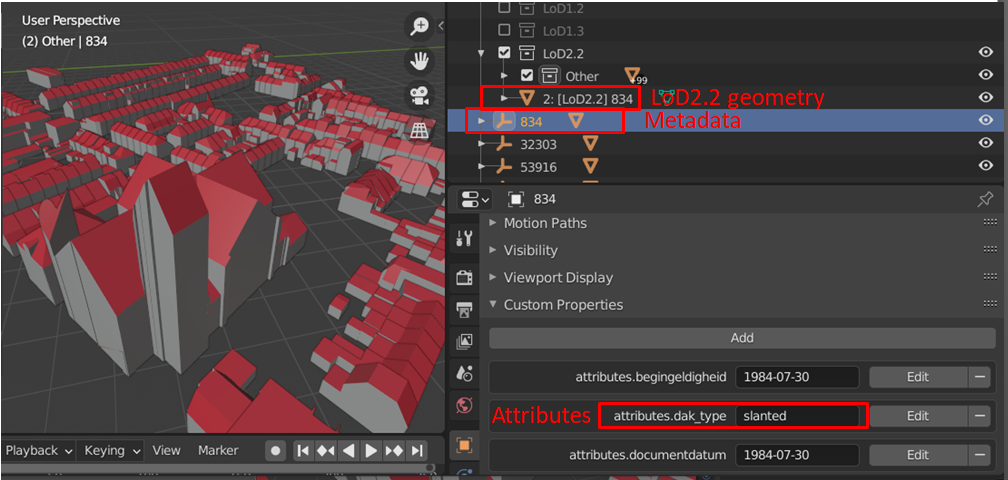
M
by magicalcloud_75 on 12 Apr 2021, edited 12 Apr 2021
#
I use the german FZK viewer to make it IFC but i think Blender would be a way better tool. How can it be done?
M
by Moult on 12 Apr 2021
#
+1 votes
@LaurensJN great! If we came up with a mapping, we could do a converter! A stop-gap solution would be to dump it in a Pset. @magicalcloud_75 you can simply create a new IFC project, move all the objects into the relevant location in the spatial tree (e.g. IfcSite), then assign a class IfcBuilding. You will need to change the aggregation to be IfcSite.
L
by LaurensJN on 12 Apr 2021
#
@Moult that would be neat! The CityGML/JSON format is also quite bulky and probably has a lot of overlapping elements / attributes, but probably also a lot that are not found in IFC so it'd be quite a task I think. But adding all metadata as (in this case BAG-)pset would be the way to go at first yes.
Is there any way to change the aggregation using a script or by selecting all objects and do it at once? I was trying to make an IFC and got stuck with elements that were not in the correct spatial hierarchy. Changing aggregation of 800 buildings one-by-one does not seem to be the fastest solution :)
M
by magicalcloud_75 on 12 Apr 2021
#
Let me link and share this ..
https://geoforum.nl/t/export-3d-bag-from-qgis/5679/7
M
by Moult on 12 Apr 2021
#
+3 votes
@LaurensJN it may be worthwhile writing a City2IFC conversion script, so we don't require the overhead of Blender. That way, it can probably also handle geolocation conversion. Unfortunately, this requires me reading the City{GML,JSON} spec, which I don't quite have the time for. But it would be a great exercise for someone else on this forums who wants to practice their Python?
In the meantime, this commit allows you to change aggregations of all selected objects:
https://github.com/IfcOpenShell/IfcOpenShell/commit/cab9e4d892a971774ae1fade031f9298b98e0bb7
L
by LaurensJN on 13 Apr 2021
#
@Moult I could try to hack something together, although I'm unsure if I have all the skills for that. I don't think the geolocation will be the problem, rather the geometry itself as it has its own way of defining the geometries. There is a cityjson python parser (cjio or CityJSON /IO) that might be useful for conversion.
L
by LaurensJN on 13 Apr 2021, edited 13 Apr 2021
#
+4 votes
Actually, that wasn't so difficult at all! I used the IfcOpenShell library and the cjio library to convert the json file to an IFC file and here is the result imported in Blender. Geometry wasn't the worst, because cityjson only uses brep representations.
It's not perfect, mostly because I'm not such an expert in IfcOpenShell (for example I did not yet get the aggregations quite right), but it's surely a start. I could try to set up a github repository somewhere so others could try?
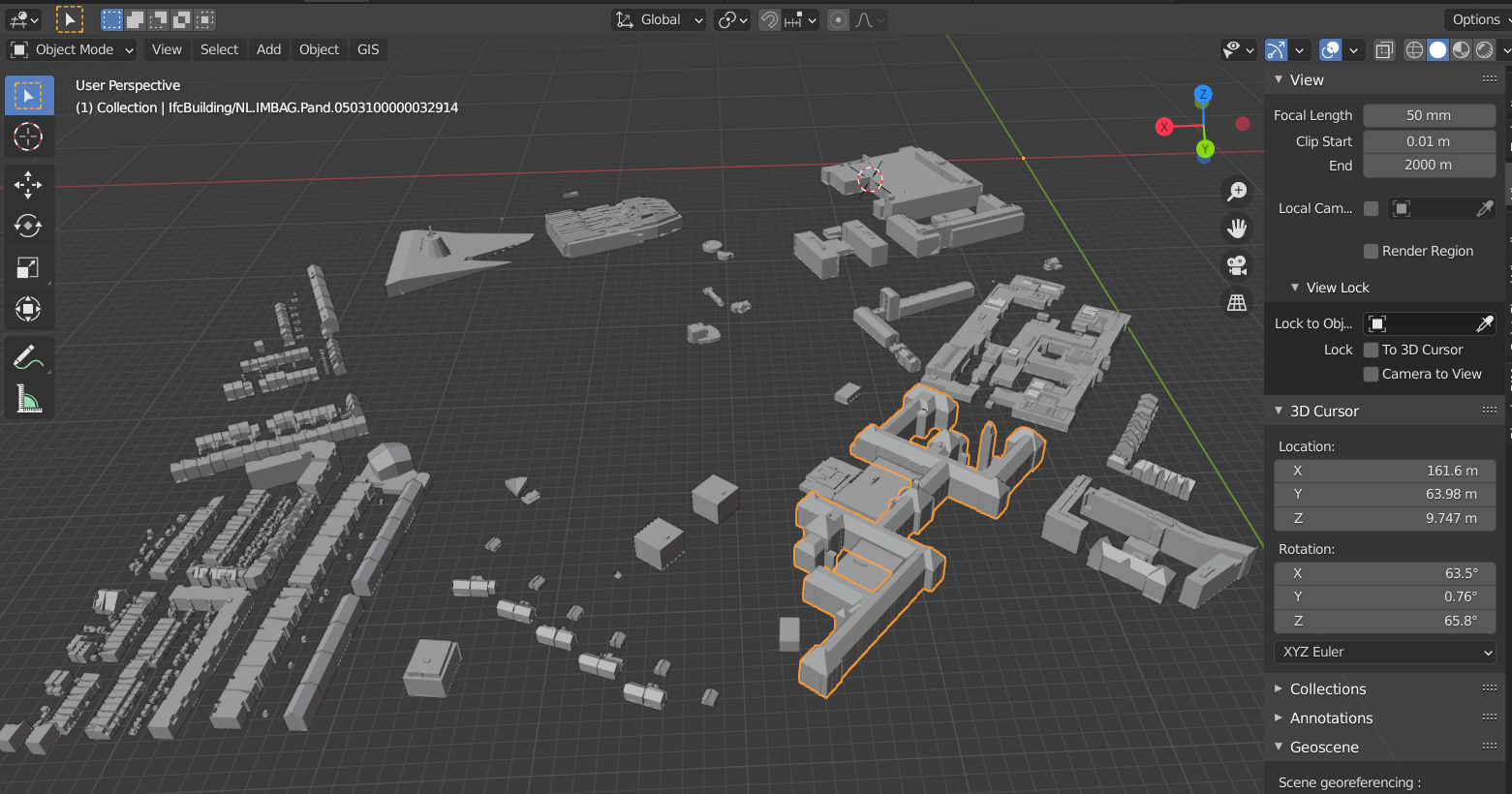
M
by Moult on 14 Apr 2021
#
@LaurensJN fantastic work! Set up a repo somewhere - and why not we make it part of the IfcOpenShell umbrella! We can all collaborate to help polish it.
L
by LaurensJN on 14 Apr 2021
#
+3 votes
I made a repo here: https://github.com/LaurensJN/CJ2IFC. Code's a mess still, but the example works so that's something :)
I'm totally up for including this in the IfcOpenShell repo, but I have no clue how so I'd need your help there.

